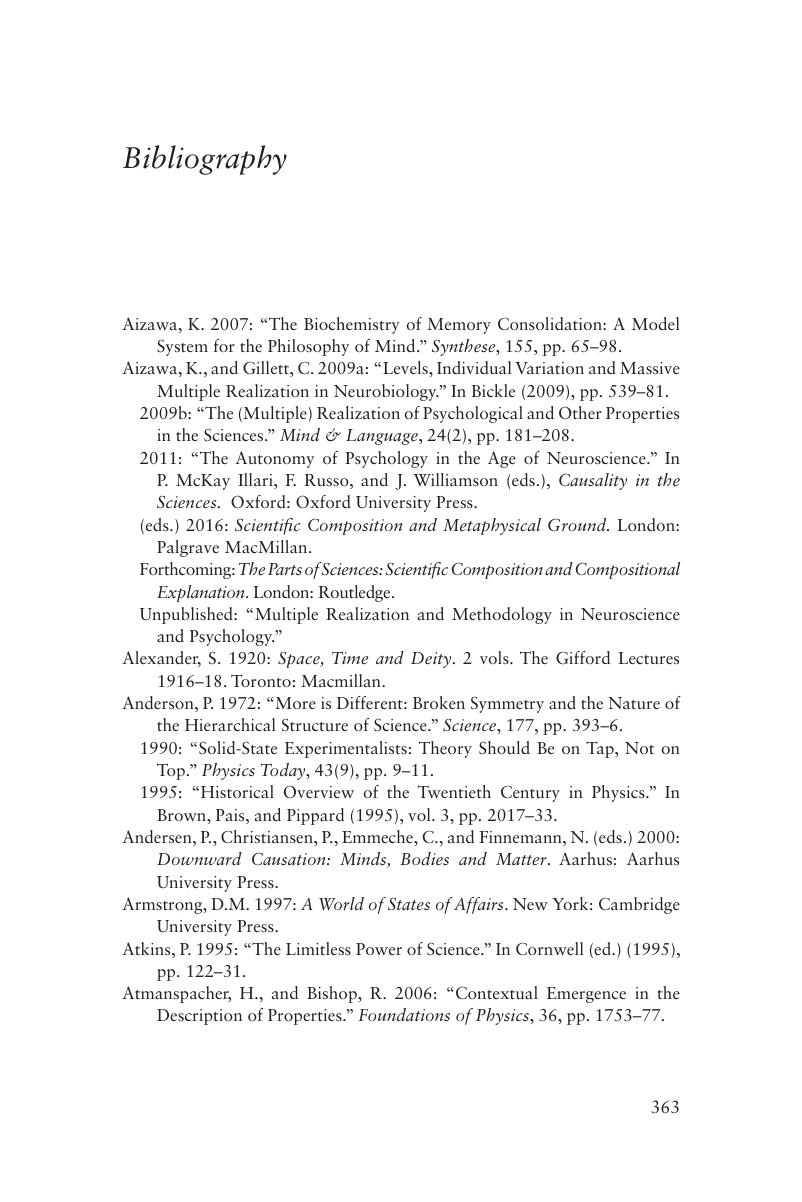Book contents
Bibliography
Published online by Cambridge University Press: 05 September 2016
Summary

Information
- Type
- Chapter
- Information
- Reduction and Emergence in Science and Philosophy , pp. 363 - 379Publisher: Cambridge University PressPrint publication year: 2016
